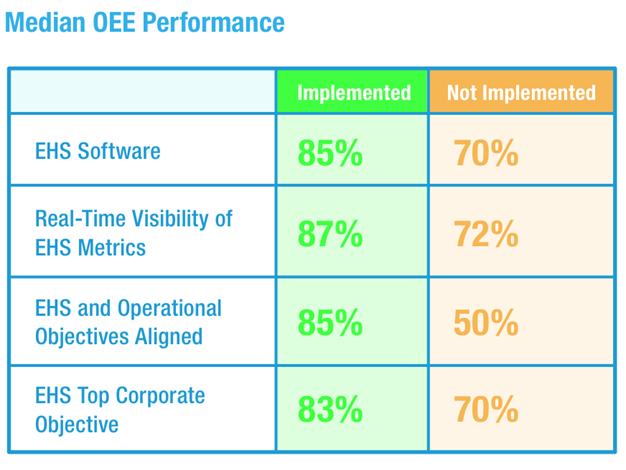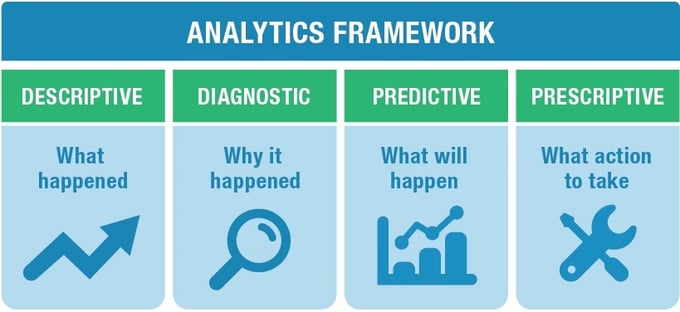Driving continuous Environmental, Health, and Safety (EHS) performance improvement depends on operationalizing EHS management: aligning people, process, and technology capabilities for consistent execution of the management system in daily operations. A key aspect of achieving this is effective performance management.
Click here to speak to Peter
Outcome-based indicators of safety performance, such as incident and injury rates, have long been the go-to metrics used to measure safety performance. Have these “classic” lagging indicators outlived their usefulness? Not yet, but safety leaders are adding the power of leading indicators to the metrics mix as a key means to drive continuous improvement.
The notion of using leading indicators to manage safety is not new. What’s new is the availability of powerful Big Data Analytics tools to identify and track predictive metrics. Let’s look at why leading indicators enabled by Big Data Analytics are a game-changer for improving safety performance, and how you can use them.
The Limitations of Classic Lagging Safety Indicators
Lagging indicators measure the outcome of a process, after the fact. Typically, they’re easy to measure, but hard to influence. The classic safety metrics such as injury rates and lost time are good examples. Although they are useful in measuring safety performance to date, they are of limited use in improving future performance.
Relying on lagging indicators is a lot like trying to drive somewhere while looking in the rear-view mirror. Incident and injury rates tell you how much your safety management process failed in the past- where you’ve been. Unfortunately, they don’t tell you why failures occurred, or give you actionable information to take proactive measures.
This common approach is helpful in monitoring long-term safety trends after the fact, but not so much in mitigating risks and preventing problems. If lagging indicators aren’t of much use in driving continuous improvement, what’s the alternative?
From Reactive to Predictive: Using Leading Indicators to Improve Performance
If improved safety performance is your destination, lagging indicators don’t provide much direction on how to get there. On the other hand, leading indicators can provide actionable information to help reduce risks and become more proactive in driving improvement. They help track activities that indicate progress towards objectives, e.g. audits performed, preventive actions implemented, and training completed.
What results are possible? Effective leading indicator use has the potential to have a real impact operating performance. For example, the LNS Research survey data shows that manufacturers with real-time visibility into EHS metrics have a 21% improvement in Overall Equipment Effectiveness (OEE) over those that don’t.
These are the kind of results that show tangible value of investing in a safety leading indicator initiative to improve Operational Excellence (OpEx).
Common Barriers in Implementing Safety Leading Indicators
A major reason lagging indicators such as incident rates became the de facto standard is that they’re easy to measure and report, and the results are comparable across sites, companies, and industries. Leading indicators are trickier to define, implement, and track than lagging indicators.
Their use requires an information technology infrastructure adequate to manage and analyze increasingly large volumes of safety, operations, and business data. Basic data management and reporting such as incident tracking, investigation, and trend analysis has long been in place; but more sophisticated, forward-focused analysis has been lacking. Now with the availability Big Data analytics, and Predictive Analytics tools in particular, safety leaders have the opportunity to better use leading indicators for next-generation performance management.
How Predictive Analytics Are Changing the EHS Game
The LNS Research analytics framework shows the four types of analytics capabilities ranging from Descriptive (What happened) to Prescriptive (What action to take). Traditional safety data analysis has been based largely on Descriptive Analytics: analyzing historical safety incident data to identify potential trends, and answering the question “what happened?”
Diagnostic analytics can give further insight by revealing “why it happened.” Further advanced are Predictive Analytics which can tell us what will happen next. Data is collected, often from disparate sources, and predictive modeling done to determine where and when future safety incidents are most likely to occur so that they can be prevented.
These predictive capabilities can optimize the selection and use of leader indicators in several ways:
- Leverage new data sources- Big Data technology makes it cost-effective to retrieve and combine data from disparate business and production systems, e.g., equipment operations, maintenance records, and HR data. This enables taking a more holistic view in identifying risk factors.
- Identify the right leading indicators- Statistical analysis can be performed on huge amounts of data to identify what factors are correlated with improved safety results. Further analysis can then show what combinations of metrics should be used as key indicators.
- Provide new insights for risk reduction- Big Data technology automates the heavy lifting of ongoing capture of applicable data from many sources, tracking of leading indicators, reporting, and visualization. Armed with predictions of the likelihood of adverse events occurring, resources can be better allocated to corrective and preventive actions that will mitigate those risks.
Take the example of how a global building products manufacturer that noticed a spike in injury rates at several plants. A team from the safety, HR, operations, and maintenance functions identified several risk factors as predictive of incidents including, % overtime of total labor and on-time completion of preventive maintenance actions. These metrics are monitored, and if outside parameters, the risk is classified as medium or high, and corrective actions taken. Taking such a proactive approach improves both safety and production results.
Big Data also opens the door to leveraging real-time operational data from shop-floor systems such as machine and process control systems. For example, analysis of machine data can identify non-conformances, such as too many micro-stoppages or disabling of safety limit switches, signaling misuse of machines and short cuts around safety processes which could then be addressed.
Next-Generation Safety Management Requires Next-Generation Performance Management
Although useful, lagging indicators, such as incident rates, have their limitations in driving safety performance improvement. By incorporating leading indicators into the safety management system, your organization can become more proactive in identifying and reducing operational risks. With the ready availability of Big Data and Predictive Analytics technology, safety and operations leaders now have an unprecedented opportunity to take advantage of leading indicators to help operationalize EHS management and continuous performance improvement.



